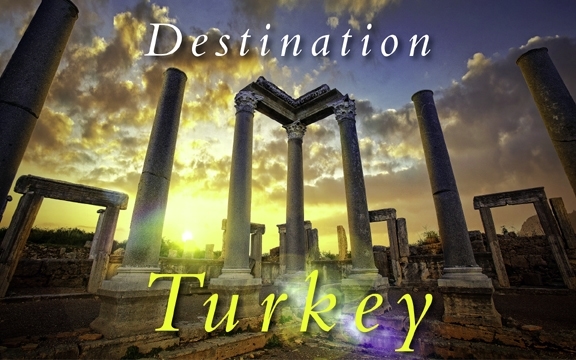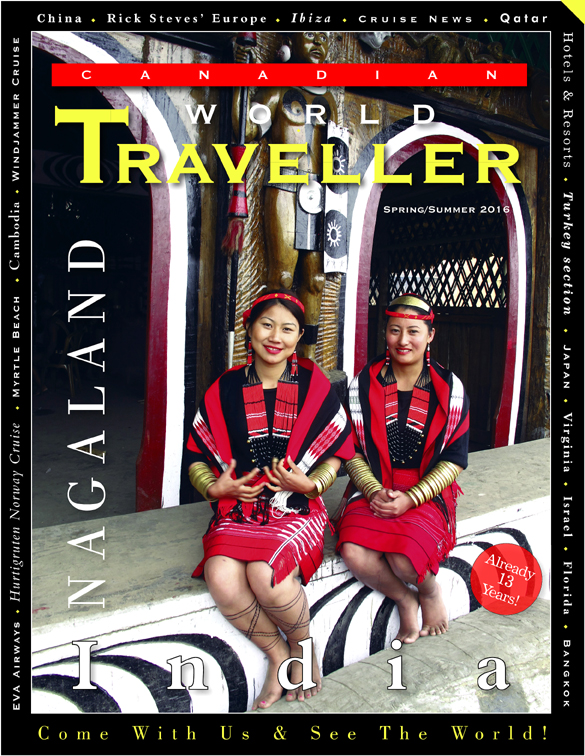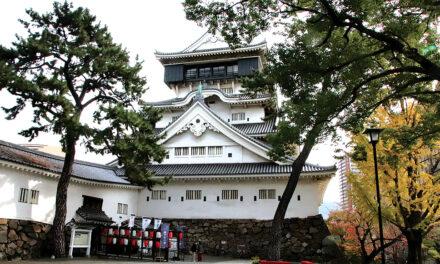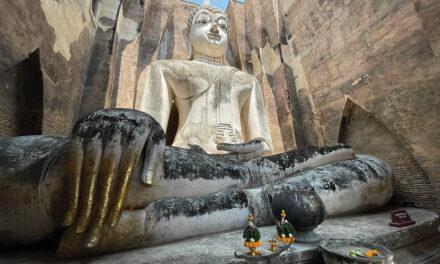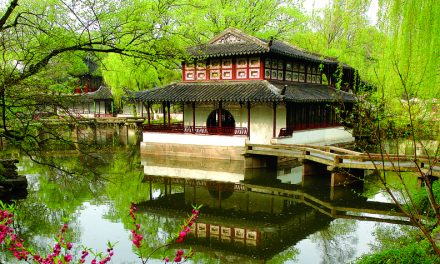Turkey
Destination Turkey
by Dwain Richardson

Turkey, officially known as the Republic of Turkey, borders on two major continents: Europe to the west and Asia to the east. Some of its neighbouring countries include Syria, Greece, Iraq, Armenia, and Georgia. Turkey is also surrounded with major bodies of water, such as the Black Sea (north), the Mediterranean Sea (south), and the Aegean Sea (west). In addition, the country boasts the Bosporus, Sea of Marmara, and Dardanelles. These bodies combined make up the Turkish Straits, which divide Europe from Asia.
Like most European and Asian countries, Turkey is deeply steeped into history. It is possible to trace the first inhabitants—Hattians and Hurrians—in this country from about 6000 B.C.! Some historic sites, such as the Göbekli Tepe temple, have been around for a longer period of time (10,000 B.C.). What’s more, the country passed through many historical periods, namely the Neolithic and Hellenistic eras, followed by the Antiquity and Byzantine eras, and eventually the Seljuk and Ottoman eras.
With respect to the country’s geography, most of Turkey belongs to Asia (97%), while the remaining percentage falls under European jurisdiction. Its area takes up 783,562 square kilometres; of this area, 755,688 square kilometres are in southwest Asia, while the remaining 23,764 square kilometres are in Europe. Turkey also has a rich and varied landscape, especially on Asian territory. The eastern and southeastern areas of Turkey are characterized by plateaus and coastlines as well as mountains and rivers (Euphrates, Tigris, Aras). Given that Turkey has many bodies of water and has an ever-changing landscape, it is not uncommon for the country to be the site for earthquakes or volcanoes.
The climate along the Aegean and Mediterranean Seas, especially in coastal areas, is generally temperate. Summers are hot and dry, while winters are mild and wet. Coastal areas along the Black Sea boast of an ocean-like climate; summers in this region are wet and warm, and winters are either cold or cool, and wet. This area receives the most abundant rainfall—an average of 2,200 millimetres of rain per year.
Areas along the Sea of Marmara, however, transition between a Mediterranean and ocean-like climate. Summers are either warm or hot, and are generally dry. Winters, on the other hand, are cool or cold, and are mostly wet. The country receives snowfall, but depending on geographical location, the snow immediately melts. In easternmost areas of Turkey, snow piles up a great deal because of cold temperatures. Along the Anatolia Peninsula, for instance, temperatures soar between -30°C and -40°C. This is one area where snow will linger the longest (a minimum of 120 days in the year).
Turkey welcomes approximately forty million tourists each year. According to the United Nations World Tourism Organization (UNWTO), Turkey is the sixth most popular destination.
This European destination boasts of many kinds of tourism: namely, coastal, health, and thermal (also known as alternative tourism ). Tourists can also take advantage of open air sports in the summer and winter. For instance, it is possible to take up winter sports and mountaineering. Turkey is home to exotic and natural environments, making it possible to be an ecotourist during your stay. For a more romantic getaway, hop aboard one of many cruise ships from the Mediterranean Coast, Istanbul, Antalya, Pamukkale, or any other port area.
Are you worried about potential language barriers? Most Turkish locals speak English, while some get by with French, German, and Russian.
Across Turkey
The Hills Are Alive in Cappadocia!
Tourists will be enamored by honeycombed hills beautiful boulders. Most architecture in this area is made of soft stone and rocks, including the Göreme Open-Air Museum and refuges of Derinkuyu and Kaymakli. It is even possible to stay in an underground hotel! Ideal for anyone interested in having a 21st-century accommodation experience.
Cappadocia has a rich historical background, and is also known for its hiking paths. And if you love landscapes, you’ll be greeted with breathtaking lunar views, characterized by orange and cream-coloured valleys.
There is much to see and do while in Cappadocia. Visit the Göreme Open-Air Museum, one of Turkey’s UNESCO World Heritage sites, and take in the Byzantine monastic settlement as well as a 17th-century pilgrimage site with its numerous rock-cut churches, chapels, and monasteries, noteworthy of Byzantine art. For an additional 10.00 TRY ($4.61 CAD), check out the Karanlik Kilise (Dark Church), an 11th-century compound known for its dome-shaped structure with one main apse, two small apses, and four columns, all decorated with frescoes from the Bible’s New Testament. Some of the scenes visitors can see include the Last Supper, Nativity, Adoration of the Magi, Crucifixion. This is the most famous of all on-site churches.
During your visit at this museum, follow a cobbled path from the admission booth and see the Aziz Basil Sapeli, a chapel dedicated to St. Basil—one of Cappadocia’s foremost saints.
As you continue your visit, you will be greeted by other churches, including Elmali Kilise (Apple Church), Azize Barbara Sapeli (Church of St. Barbara), Yilanli Kilise (Snake Church), Azize Katarina Sapeli (Church of St. Catherine), and Çarikli Kilise (Church with Sandals), all representative of biblical frescoes and tributes to patron saints.
On your way out the Göreme Open-Air Museum, stop by the cordoned-off Rahibeler Manastiri (Nunnery). This nunnery was seven storeys high; a dining hall and small fresco chapel now remain. When you finally exit the museum, be sure to visit the Tokali Kilise (Church of the Buckle), located across the street from the Open-Air Museum. This is the biggest of all churches, known for its underground chapel and restored frescoes.
The Old Village, located in Ürgüp, boasts of traditional stone architecture. Be sure to drop by visit this neighbourhood if this architecture interests you.
Do you like the military? You will want to see the Uçhisar Castle made of volcanic rock. No matter where you are, you can see this castle from miles away. Tunnels galore! Villagers considered this castle a place of refuge for many centuries, especially when armies captured surrounding plains. If you want to soak in the sunset, climb through the castle’s mazy core to reach its vantage point. Because the Uçhisar Castle is a major attraction, be sure to arrive as early as possible to avoid the sheer volume of tourists.
If you like to hike, the Ihlara Valley will certainly peek your interest. Ideally, you should begin your hike in the early morning if you want to follow the entire trail (a four-hour hike). And be sure to get some shade, since it is often hot and humid, especially during the summer.
The Ihlara Valley trail begins in the Ihlara village and ends in Selime, a village in the Güzelyurt district. You will be greeted with many churches along this forty-kilometre trail. As you continue your trip to Selime, however, you will be taken aback with many fields where farmers will till their ground and shepherds graze their sheep.
Getting Around Cappadocia
Tourist buses end service in Nevşehir, located outside Cappadocia. Shuttle buses will then take you to your final destination, whether it’s Ürgüp, Göreme, Uçhisar, Çavuşin, Nevşehir, Ortahisar, or Avanos. You can also take a taxi. Of course, you can walk around Cappadocia.
Roads are in good condition; getting around Cappadocia is easy if you decide to drive by car or motorcycle.
Other Things to Do in Cappadocia
• Get aboard a hot air balloon and see the many landscapes from the air.
• Watch a traditional Sema, a performance combining dance, cultural attire, and music (part of the UNESCO Representative List of the Intangible Cultural Heritage of Humanity).
• View fairy chimneys in Devrent Valley and monk’s chapels in Monk Valley.
• Learn basic culinary techniques while preparing meals with the villagers.
• For night owls, have a beer in one of many Cappadocia bars, or spend the night dancing at a restaurant or disco club.
Denizli: Home of the “Cotton Castle” and Hierapolis
The “Cotton Castle” (Pamukkale in Turkish) is another UNESCO World Heritage site located in southwestern Turkey. You will find many terraces made of travertine tile (form of limestone deposited by mineral springs; tile can either be tan, cream-coloured, or rusty). The castle is 2,700 metres long, 600 metres wide, and 160 metres high. This is a natural bathing spot for visitors; water comes from hot springs, making it warm and rich with minerals.
Hierapolis is yet another UNESCO World Heritage site and popular tourist attraction. Because Hierapolis means “sacred city,” you will be greeted by a thermal Sacred Pool, giving you the opportunity to swim with antiquities, see the Pamukkale, and see many museums from a distance.
Some of the many sights to see in Hierapolis include the Pamukkale Museum. Many displays and collections await, especially coins, jewellery, sarcophagi, and architectural fragments. You can also see many statues and reliefs. Ruins also characterize this World Heritage site: most ruins hail from the Roman era, since consecutive earthquakes ravaged Hellenistic remains in 17 AD and 60 AD. Byzantine walls surround the site, too.
The nymphaeum is behind the Sacred Pool. This monumental fountain provided water to the city, and dates back to the fourth century AD. The Temple of Apollo is next to the nymphaeum, and is the patron god and the city’s founder. The foundations of the Hellenistic temple remain, while the rest of the structure is Roman (the new temple was reconstructed in the third century AD).
The Temple of Apollo had originally been built over Platonium, an active planar fracture. Platonium is south of this temple, a sacred cave some thought was the entrance to the underworld—the place where the Roman god Pluto (Greek god Hades) lived. Because the cave still emits poisonous vapors into the air, no entry to Platonium is permitted.
Be sure to stop by Hierapolis’s theatre, built around 200 BC. Twenty thousand audience members once filled the theatre. Nowadays, only thirty rows remain.
Getting to and from Denizli
You can get to and from Denizli by train (three trains operate between Izmir and Denizli daily). One train leaves Istanbul in the evening and arrives in Denizli in the mid-morning.
Other Things to do in Denizli
•Visit the Hierapolis Archaeology Museum, a must-see for tourists who appreciate Romano-Greek history, stamps, and jewellery. A sphinx will greet you as you walk through the doors. Why not rest a while in the Pamakkule area?
•Have a shopping craving? Take a stroll through Forum Camlik. Restaurants, shoe stores, fashion outlets galore! Teras Park is also a popular shopping centre. Historic ruins set this centre apart from others in the country.
•Buy handmade clothes and purchase textile products from any local market or shopping centre.
İzmir: Turkey’s Metropolitan Hub
İzmir (formerly Smyrna) is one of Turkey’s metropolitan cities, and is the third largest port city located in the country’s west end. The city boasts of its many heritages, especially Levantine, Greek, Armenian, and Jewish. Cultural activities boom in this port-city area; the main activity is the International Arts Festival, taking place in June and July. Former industrial buildings have turned into cultural and community spaces.
The Kemeralti Market is by far a must-see for those who like to shop until they drop. Tourists can pick up bargains in leather goods, clothing, and jewellery. Flower and bead markets are also must-sees, and while you’re in the market, have a cup of coffee and baklava in one of many coffee shops. You can also have a sip of coffee in the Kızlarağası Han caravanserai, located in Anafartalar Caddesi, the market’s main bazaar area.
Hisar Camii is the largest mosque located in the main bazaar area. Watch out for blue and gold motifs on the domed ceiling and carved roses and grapes under the women’s gallery and on stone staircases. A must-see.
Do you like waterfronts, bars and restaurants, fashion and nightlife? The Kordon is for you! This is where you will find many pedestrian paths, restaurants, bars, even the new Arkas Art Centre, home of exciting art exhibits, are located. Like visiting Old Montreal, Old Quebec, and other historic areas, you can get around the Kordon by horse coach. All it costs is TRY 20 ($9.16 CAD) for four people!
Like Cappadocia, İzmir has many churches for visitors to see. Some of the most noteworthy churches are the Church of St. Polycarp, honouring Sultan Süleyman the Magnificent, St. John’s Cathedral, and St. John’s Anglican Church.
Take a stroll between Alsancak and Basmane, the city’s town centre. This former Greek neighbourhood is now the home of Kültürpark, the sight of much greenery, pedestrian pathways, and special attractions. Keep an eye on a fifty-metre parachute tower, a Ferris wheel, contemporary sculptures as well as exhibition halls for special events such as the International İzmir Festival.
While in İzmir, visit some heritage buildings in Çeşme, especially the fortress and museum. The 16th-century fortress is now home to the annual Çeşme International Festival held each July. It also hosts many cultural activities, such as concerts and art exhibits. The city’s archaeological museum, located inside the fortress, displays many objects, including paintings and archives. You can also find exhibits dedicated to marble objects and ceramic artefacts.
Religion is a common theme across Turkey, and Çeşme is no exception. The city is home to a number of 19th-century mosques and churches. Chief among them are the Hadji Memiş Aga and Hadji Mehmet Aga mosques, as well as the Haralambos Church.
After a day of walking around town and visiting several attractions, you probably want to rest a while. Perhaps you’re up to swimming or other water sports. Çeşme and surrounding areas have no shortage of beaches, lakes, and seas, and it’s possible to do go windsurfing or diving. Located seven kilometres from Çeşme, the Alaçati harbour is the ideal location for windsurfers and sailors who flock the beaches between May and October. Enjoy the many yearly sailing and surfing competitions while you’re here.
Lastly, take a bite into local cuisine. Seafood is the Çeşme specialty. Any meal goes well with lobster, mussels, octopus, or sea breams. If you crave sandwiches, taste the İzmir kumrusu garnished with meats, cheese, and vegetables. Speaking of vegetables, taste enginar (artichokes dipped in olive oil). What’s for dessert? Try şeker işi, a sweet pastry served with a local fig marmalade.
Ephesus: Connection with Sacred Heritage
This is an ancient city nestled in the country’s central Aegean area. Any remains found date back to Greek and Roman Empire history. This Turkish region is known for its sacred heritage, since many prominent sacred figures are associated with religion, chief among them St. Paul, St. John the Evangelist, and the Virgin Mary. The Temple of Artemis was one of many Seven Wonders of the World; nowadays, all that is left are its foundation ruins dating back to the Hellenistic era.
Other sacred sites include the House of the Virgin, Temple of Hadrian, Isabey Mosque, Church of Mary, Ancient Synagogue, Cave of the Seven Sleepers, and the Theatre of Ephesus.
Ephesus is both an area for tourists (especially from Mediterranean Europe) and pilgrims.
Other Things to do in İzmir
• Tour Ephesus and the House of the Virgin Mary.
• Visit Ancient Smyrna for a half day.
• Take a full-day tour of Pergamon and Asclepion.
Pergamon: Connecting History with Archaeology and Mythology
Pergamon was an ancient city located in present-day Bergama. It was the former capital of the Asian province during the Roman era until Ephesus acquired this status.
How did Pergamon come to be? Following Alexander the Great’s death in 323 BC, his generals divided all the conquered territory. Following a series of conflicts, Pergamon eventually became part of a territory Lysimachus controlled (one of the Macedonian generals). Unfortunately, Lysimachus was also dragged into military conflicts, resulting in his death when he confronted Seleucus, Babylon’s Greco-Macedonian administration ruler. Meanwhile, a trusted lieutenant called Philatauerus of Tieium was watching over Lysimachus’s war chest in Pergamon; he eventually pledged allegiance to Seleucus, resulting in Pergamon becoming part of the Seleucid Empire. He ruled Pergamon until his death in 263 BC.
Who founded the ruling dynasty of Pergamon? Contrary to public belief, Attalus I founded it (241–197 BC). He won an attack over the Galatians, a Celtic tribe that settled in central Anatolia during the third century BC. Unfortunately, central Anatolia was not immune to Galatian attackers who tried to invade Pergamon. But Attalus I managed to defeat the Galatians and make Pergamon the most powerful capital in this Turkish region.
Nowadays, Pergamon is an archaeological site housing works from the Hellenistic and Roman eras. When you visit the Acropolis, you will notice monumental tombs built for the Pergamon kings during the Hellenistic period. Of the other remaining attractions in this former city, the library of Pergamon is worth a visit, as are the Temple of Trajan, the Theatre of Pergamon, and the Altar of Zeus.
The entire Pergamon site was listed on the UNESCO World Heritage List in 2014.
ÖLÜDENIZ: Paraglide Away
Looking for a great getaway while in Turkey? Look no further. Even though Ölüdeniz literally translates as “Dead Sea,” it is anything but. Tourists will enjoy a relaxing day on sandy beaches while basking under the warm sun. Ever dream of falling off a mountain? Ölüdeniz is the go-to paragliding capital. The village’s pleasant weather conditions make paragliding in this area safe. And while you’re above ground, look beneath you and be amazed at the beautiful landscapes. Paragliding flights begin and end at Babadag Mountain (1,960 metres in height). Flights last anywhere from twenty-five to forty-five minutes. No need to worry about landing: paraglide instructors will be sure you land safely on a beach.
What do you need to wear to fully enjoy this experience?
Make sure you wear comfortable clothing (paragliding companies provide you with flying suits and helmets) and a good pair of shoes. If you get thirsty while above land, be sure to walk with a bottle of water. Don’t be blinded by the sun! Sunglasses always come in handy.
Paragliding season generally runs from April until November. Flights cost 315 TRY ($144.25 CAD).
Lycian Way: Prepare for a Long Trek
The Lycian Way, designed by British and Turkish amateur historian Kate Clow in 1999, is one of Turkey’s long routes (540 kilometres in length). Located in southern Turkey, the Lycian Way begins in Fethiye to the west and ends in Antalya to the east. Want to travel along this route by mountain bike? Mountain bikers will be out of luck, since the hard and stony underfoot paths are not suitable for bikes. This trail has a mixture of Roman roads, old footpaths, and mule trails.
If long treks are not your cup of tea, you can swim, canoe, or paraglide along the Lycian Way. Public transportation is also available to travel from one area to the next.
The best time for trekking is in the spring and fall, more specifically between February to May and September to November, respectively.
Looking for accommodation or camping sites? You’ll find many village houses, pensions, and small hotels along the way, as you’ll come across a lot of camping sites. If you decide to camp out, you will have no shortage of water sources.
For those who are interested, some tourist associations in Turkey plan seven-day tours along the Lycian Way once a month.
Other Things to do in ÖLÜDENIZ
• Take advantage of the many natural parks, including Kidrak Natural Park.
• Have a swim and take a slide down many water tubes at Water World Aqua Park. An ideal excursion for children!
• Glide along the many bodies of water with boat trips, and enjoy the sunset aboard a cruise.
• Night owls will enjoy the many bars at their disposal, including the Ölüdeniz Night Bar, Crusoes Beach Club, Relax Cocktail Bar, and One for the Road.
Antalya: Mediterranean Pearl Rich in Culture, Hotels, and Golf Clubs
This is an ideal location for travellers wishing to be surrounded by sea, sun, and sand. Aside from the coastal beauties, Antalya is yet another Turkish cultural hub. Entertainment fills the air year-round. And entertainment doesn’t only take place indoors: It’s not uncommon to enjoy an opera or theatre performance under a starry sky. Of course, festivals will always line Antalya streets.
Although it is possible to visit a lot of ancient ruins and historic buildings, many of these establishments have turned into hotels, bed-and-breakfasts, bars, and restaurants. Looking for a souvenir to bring with you on the way back home? Antalya has many shops selling local products and gift items.
Like Çeşme, Antalya boasts of land, air, and water sports. But it also boasts of worldwide sport events such as football, volleyball, rafting, and—yes, it’s true! —golf. The Tat International Golf Club, located in Belek, is the go-to destination for golfers. The Montgomerie Maxx Royal Golf Club and Carya Golf Clubs are also popular spots night and day.
Considering that many events take place in Antalya, this city hosts the 2016 Expo beginning on April 23. A number of national celebrations will abound, including presentations on culture through meetings and ceremonies. It will also be possible to take part in many symposia, panels, meetings, and congresses on the environment, agriculture, development policies, and much more. The expo ends October 30. For more information about this event, visit http://www.expo2016.org.tr/anasayfa/EN.
Best Eats
No matter your destination in Turkey, no trip is complete without trying out a few dishes.
• Menemen: scrambled eggs mixed cooked in sautéed vegetables; served with hot bread.
• Köfte: made of ground beef or lamb; makes for good stews or nice accompaniments with salads, sandwiches, or yogurt.
• Kuzu Tandir: made with roasted lamb; served with rice or potatoes, and yogurt.
• Lahmacun: flat and crispy bread garnished with minced meat, salad, and lemon juice. You can replace meat with vegetarian foods (e.g., red beets). Makes for a light lunch or snack while visiting attractions.
• Börek: a pastry filled with minced meat or spinach, and cheese. You can roll it or lay it out like you would if you prepared lasagna. Ideal for any meal.
• Baklava: a must-eat! Full of nuts and syrup; ideal when eaten fresh.
• Güllaç: dessert often served during Ramadan. The base is dough, milk, rosewater, nuts, and pomegranate seeds.
Bon appétit, and enjoy your stay in Turkey!
www.goturkey.com
Click on cover to view published article

